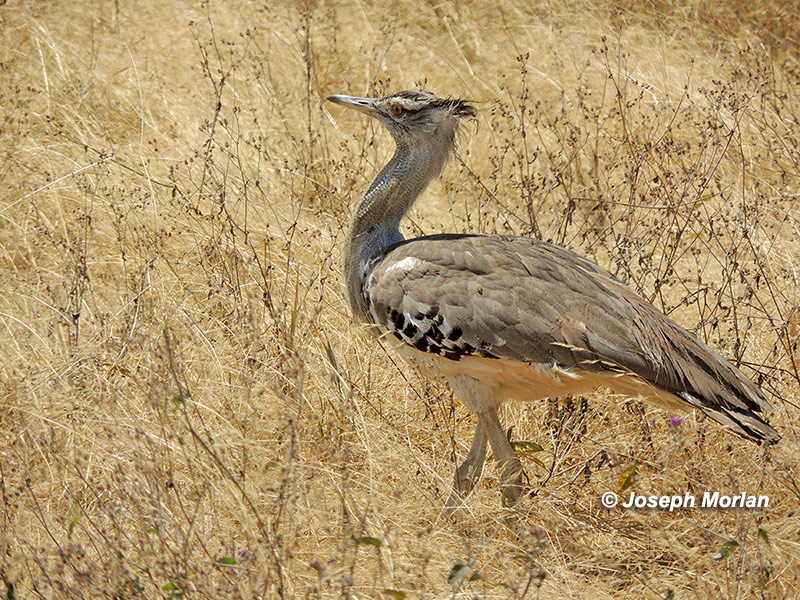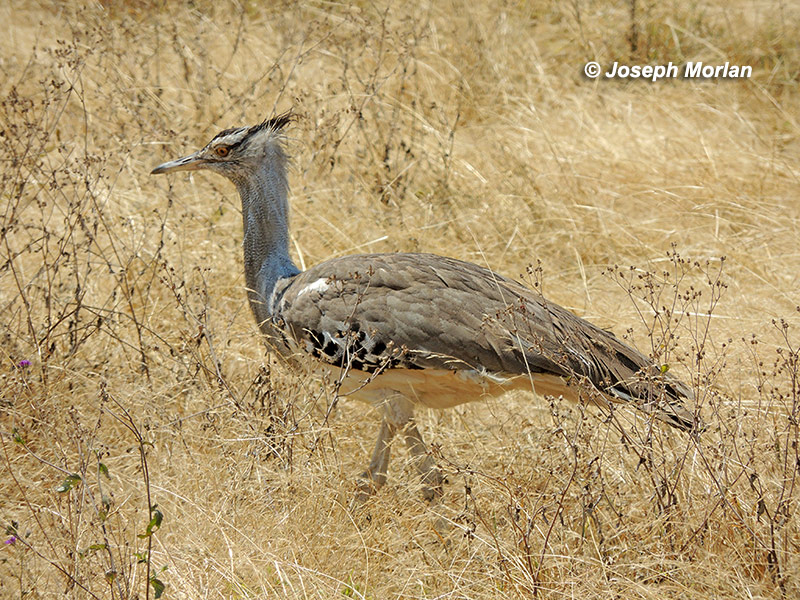

This species is said to be the heaviest flying bird with males weighing up to 42lbs or more. However, they prefer to walk with long strides instead of flying. This individual strutted with an odd gait in which the head was raised and pointed upward slightly after each step. Its range is scattered through Eastern and Southern Africa. The Indian (Ardeotis nigriceps) and Australian Bustards (Ardeotis australis) are similar in size and plumage, and may form a superspecies with Kori. Although the species is declining, it remains classified "least concern" by Birdlife International because of its extensive range.
In the past they were classified in the genus Choriotis, but Ardeotis has priority. Bustards were formerly included with the Cranes in the order Gruiformes. However, following Hacket et al. (2008), Clements and IOC put them in their own order (Otidiformes) and in the their own family (Otididae).
Reference
Hackett, S.J., R.T. Kimball, S. Reddy, R.C.K. Bowie, E.L. Braun, M.J. Braun, J.L. Chojnowski, W.A. Cox, K.-L. Han, J. Harshman, C. Huddleston, B.D. Marks, K.J. Miglia, W.S. Moore, F.H. Sheldon, D.W. Steadman, C.C. Witt and T. Yuri. 2008. A phylogenomic study of birds reveals their evolutionary history. Science, 320: 1763-1768 [PDF] [Podcast].
Nikon P510 Coolpix Point-and-shoot.